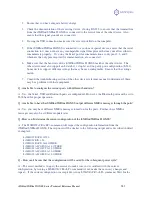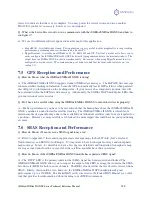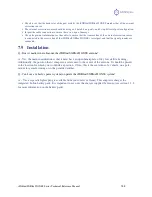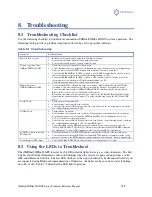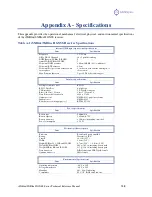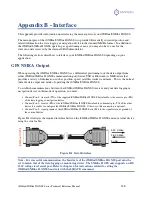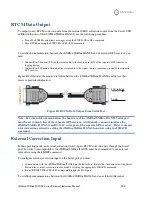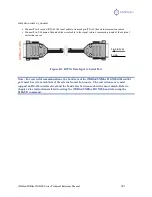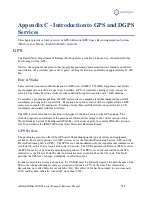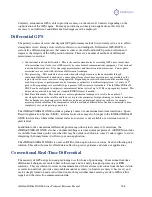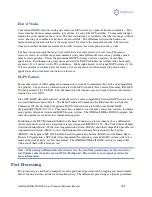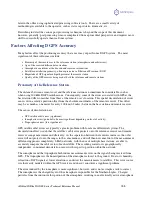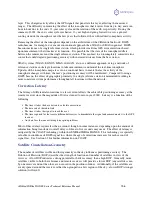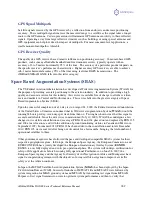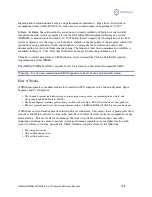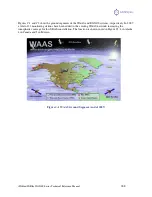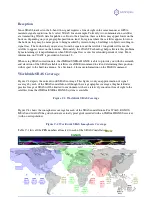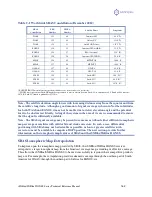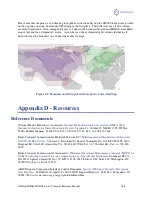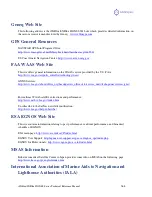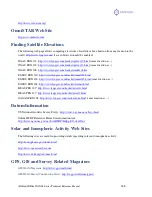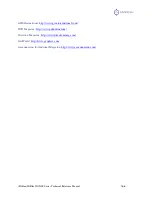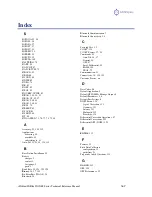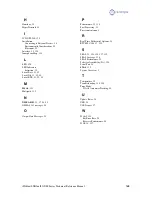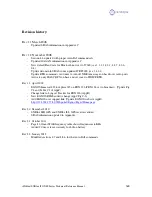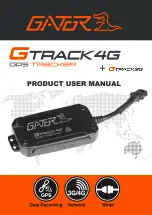
iSXblue/SXBlue II GNSS Series Technical Reference Manual
155
later in the office using sophisticated processing software tools. There are a small variety of
methodologies available to the operator, such as static, rapid static, kinematic, etc.
Describing in detail the various post processing techniques is beyond the scope of this document,
however, generally, post processing is more complicated from a procedural perspective and requires more
skill to successfully operate than real-time systems.
Factors Affecting DGPS Accuracy
Many factors affect the positioning accuracy that a user may expect from a DGPS system. The most
significant of these influences include:
•
Proximity of the remote user to the reference station (atmospheric and orbit errors)
•
Age of the received differential corrections
•
Atmospheric conditions at the beacon and remote user locations
•
Satellite constellation geometry, often expressed as a Dilution of Precision (DOP)
•
Magnitude of GPS signal multipath present at the remote station
•
Quality of the GPS receiver being used at both the reference and remote stations
Proximity of the Reference Station
The distance between a remote user and the reference station can sometimes be considerable, such as
when using 300 kHz DGPS radiobeacons. Consequently, some of the errors associated with GPS at the
base station differ somewhat from those at the remote user’s location. This spatial decorrelation of errors
can result in a relative position offset from the absolute coordinates of the remote receiver. This offset
may be as much as one meter for every 100 km (62 miles) between the base station and remote receiver.
The causes of decorrelation are:
•
GPS satellite orbit errors (significant)
•
Ionospheric errors (potential to be most significant depending on level of activity)
•
Tropospheric errors (less significant)
GPS satellite orbit errors are typically a greater problem with local area differential systems. The
decorrelation effect is such that the satellite’s orbit error projects onto the reference receiver and remote
receiver’s range measurements differently. As the separation between the receivers increases, the orbit
error will not project onto the ranges in the same manner, and will then not cancel out of the measurement
differencing process completely. SBAS networks, with the use of multiple base stations, are able to
accurately compute the orbit vector of each satellite. The resulting corrector is geographically
independent, so minimal decorrelation occurs with respect to position within the network.
The ionosphere and the troposphere both induce measurement errors on the signals being received from
GPS. The troposphere is the humid portion of the atmosphere closest to the ground. Due to its humidity,
refraction of GPS signals at lower elevations can distort the measurements to satellites. This error source
is rather easily modeled within the GPS receiver and doesn’t constitute a significant problem.
The error induced by the ionosphere is more significant, however, and is not as simple a task to correct.
The ionosphere is the charged layer of the atmosphere responsible for the Northern Lights. Charged
particles from the sun ionize this portion of the atmosphere, resulting in an electrically active atmospheric

